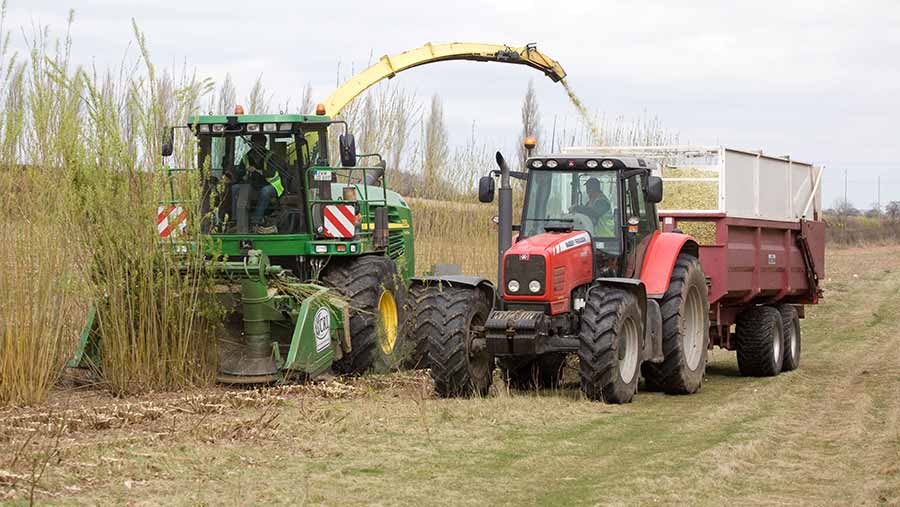Grants awarded to increase biomass crop efficiency
 © Tim Scrivener
© Tim Scrivener Government funding of £32m has been allocated to a range of projects designed to increase biomass production in the UK.
The projects are all being funded under the second round of the Biomass Feedstocks Innovation Programme, run by the Department for Business, Energy and Industrial Strategy (BEIS).
Grant funding has been allocated to develop a range of machines for planting and harvesting short-rotation coppice (SRC) willow, with the goal of scaling up production on UK farms.
See also: Why energy crops can fill the BPS income gap
In total, 12 projects have been successful in securing grant support, spread across a range of biomass crop types.
The Net Zero Willow project, led by Willow Energy, is one of these and will address the shortcomings in the mechanical equipment currently used to plant and harvest SRC.
Currently, all SRC willow planting material is produced and processed by hand.
Similarly, planting relies on workers doing long shifts using 30-year-old technology.
The optimum time for planting willow is mid-March, but currently most willow is planted between April and July because before that soils are typically too waterlogged to cope with the machines currently in use.
The proposed equipment includes an autonomous willow rod processing machine controlled by GPS, an autonomous SRC willow planting machine, and a purpose-built tracked willow harvester with storage bunker.
This will enable willow to be planted and harvested more efficiently and reliably, reducing costs and increasing the income potential for farmers.
BEIS says: “The innovations have been developed from the ground up to travel and operate on UK marginal land in the harshest of conditions.
“They are not conceptual designs but have been designed to work and with mass-production in mind.”
Other projects which have received funding from the programme include one led by miscanthus specialist Terravesta Farms, focusing on using new technologies and automation to improve miscanthus planting and establishment methods.
Dr Jason Kam, Terravesta’s head of R&D, said there were several areas of focus for the company’s Omenz project, which aims to optimise miscanthus establishment through improved mechanisation and data capture to meet net-zero targets.
The first relates to production of planting material. This aims to improve the quality of the rhizomes coming from the nursery and will look at miscanthus seed development and test biological treatments and crop nutrition to help the plants grow better.
The second focus area is site preparation, looking at retaining moisture, reducing tillage and improving soil health.
Establishment monitoring will test drone agronomy, remote sensing and data capture, to improve crop performance.
The AgriFood and Biosciences Institute has also been awarded funds to develop a web app that will allow farmers to enter their postcode and find out what biomass crops are suitable for their land and their economic potential.
